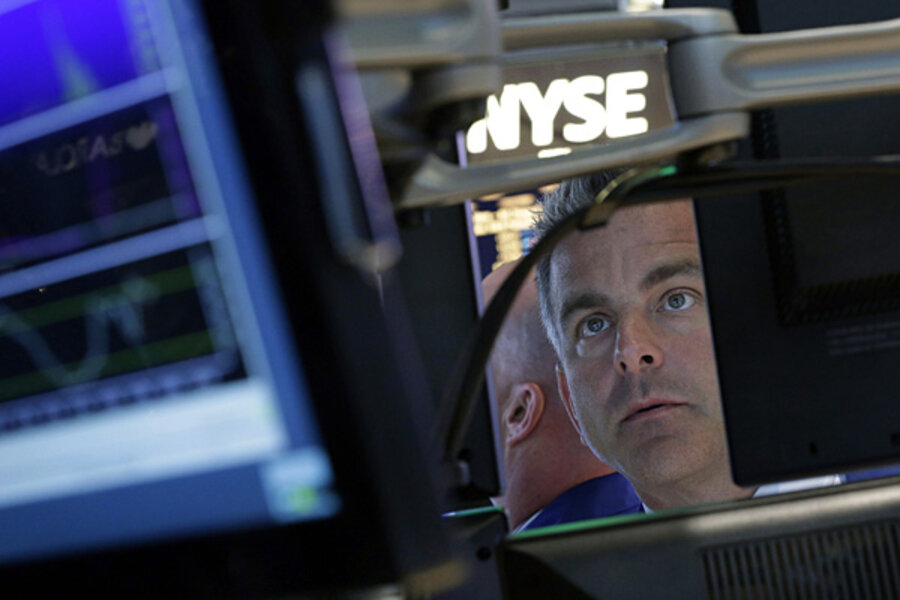Stocks surge after Federal Reserve keeps stimulus
Loading...
| New York
The stock market hit a record high Wednesday as investors cheered the Federal Reserve's surprise decision to keep its economic stimulus program in place, at least for now.
Stocks traded slightly lower throughout the morning, but took off immediately after the Fed's decision in the early afternoon. Bond yields fell sharply — their biggest move in nearly two years. Meanwhile, the price of gold jumped as some traders anticipated that the Fed's decision might cause inflation.
Fed policymakers decided to maintain the central bank's $85 billion-a-month bond-buying program, a program that had been in place in one form or another since late 2008. It is designed to keep interest rates low to spur economic growth, and has fueled a four-and-a-half-year bull run in stocks.
While the U.S. economy appeared to be improving, the bank's policymakers "decided to await more evidence that progress will be sustained" before deciding to slow bond purchases. The bank also cut its full-year economic outlook for this year and the next.
Stock traders completely shrugged off the Fed's dimmer outlook and focused on the continued stimulus.
The S&P 500 surged 20.76 points, or 1.2 percent, to 1,725.52, slicing through its previous all-time high of 1,709.67 set on Aug. 2.
The Dow Jones industrial average jumped 147.21 points, or 1 percent, to 15,676.94, also above its previous record high of 15,658 from Aug. 2.
The Nasdaq composite rose 37.94 points, 1 percent, to 3,783.64.
The fate of the Fed's economic stimulus program has been the biggest question on Wall Street for months. It was widely expected that the Fed would cut back on its bond buying at its September meeting.
Tom di Galoma, a bond trader at ED&F Man Capital, said he was "completely shocked" that the Fed decided to wait.
Some investors advised caution, even with stocks hitting all-time highs.
While the Fed's decision is positive for the market in the short term, "investors need to take a step back and consider the idea that maybe the U.S economy is on weaker footing than we originally thought," said Marc Doss, regional chief investment officer for Wells Fargo Private Bank.
Bond prices also rose sharply, sending yields lower. The yield on the 10-year Treasury note fell to 2.68 percent — from 2.87 percent a minute before the Fed released its statement. It was rush into bonds by investors not seen since October 2011. That yield is a benchmark for many kinds of lending rates, including home mortgages.
As bond yields plunged, investors snapped up stocks that tend to pay richer dividends, such as utilities. The Dow Jones utility average jumped 3 percent, its best day in two years.
Home builder stocks also rose as investors speculated that the Fed's pledge to keep interest rates low would continue to benefit the housing market. Pulte Homes, Hovnanian and Toll Brothers were up more than five percent each, while homebuilder D.R. Horton jumped nearly seven percent.
The price of gold jumped $55, or 4 percent, to $1,364 an ounce.
In June, Fed Chairman Ben Bernanke laid out a plan to start easing up on the bond purchases, and pledged to end them by the middle of 2014, if the economy continued to improve.
The Fed's next meeting is October 29-30 — another opportunity for the central bank to start reducing the program.
Wells Fargo's Doss and other investors said the Fed might be waiting to see what happens in Washington, D.C. in the coming weeks. A debate over the debt ceiling and a showdown between Congressional Republicans and the White House over the budget looms.
Bernanke probably kept the stimulus in place because he wanted to be certain the economy was ready to function without the Fed's help, said Matt Tom, head of public fixed income at ING U.S. Investment Management.
Cutting back before the economy was ready would have been much more destabilizing to the market, he said.







